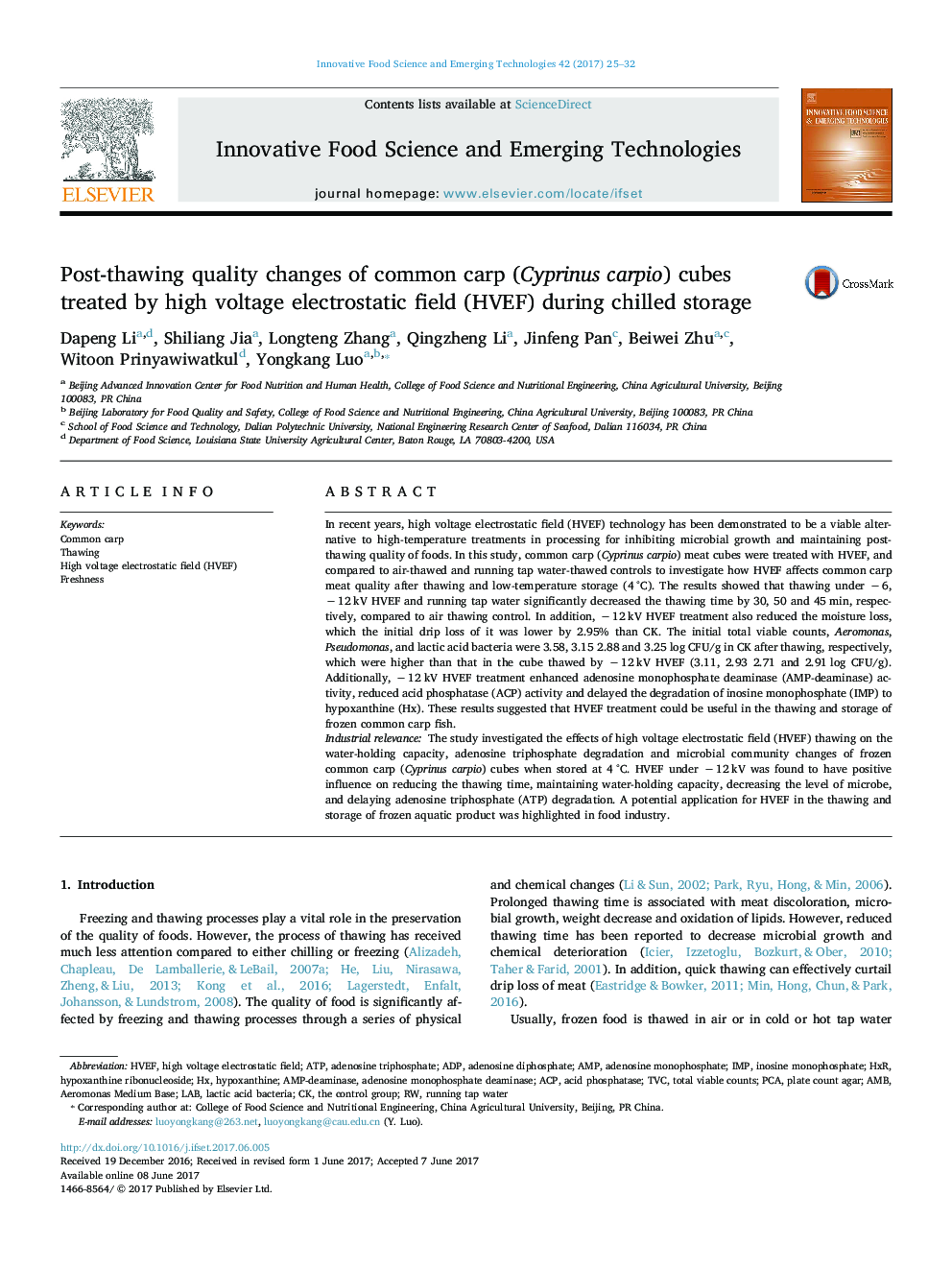| Article ID | Journal | Published Year | Pages | File Type |
|---|---|---|---|---|
| 5521714 | Innovative Food Science & Emerging Technologies | 2017 | 8 Pages |
â¢Thawing time of frozen common carp were significantly decreased by HVEF.â¢HVEF reduced water loss of thawed common carp.â¢HVEF decreased the level of microorganisms.â¢HVEF significantly delayed ATP degradation.
In recent years, high voltage electrostatic field (HVEF) technology has been demonstrated to be a viable alternative to high-temperature treatments in processing for inhibiting microbial growth and maintaining post-thawing quality of foods. In this study, common carp (Cyprinus carpio) meat cubes were treated with HVEF, and compared to air-thawed and running tap water-thawed controls to investigate how HVEF affects common carp meat quality after thawing and low-temperature storage (4 °C). The results showed that thawing under â 6, â 12 kV HVEF and running tap water significantly decreased the thawing time by 30, 50 and 45 min, respectively, compared to air thawing control. In addition, â 12 kV HVEF treatment also reduced the moisture loss, which the initial drip loss of it was lower by 2.95% than CK. The initial total viable counts, Aeromonas, Pseudomonas, and lactic acid bacteria were 3.58, 3.15 2.88 and 3.25 log CFU/g in CK after thawing, respectively, which were higher than that in the cube thawed by â 12 kV HVEF (3.11, 2.93 2.71 and 2.91 log CFU/g). Additionally, â 12 kV HVEF treatment enhanced adenosine monophosphate deaminase (AMP-deaminase) activity, reduced acid phosphatase (ACP) activity and delayed the degradation of inosine monophosphate (IMP) to hypoxanthine (Hx). These results suggested that HVEF treatment could be useful in the thawing and storage of frozen common carp fish.Industrial relevanceThe study investigated the effects of high voltage electrostatic field (HVEF) thawing on the water-holding capacity, adenosine triphosphate degradation and microbial community changes of frozen common carp (Cyprinus carpio) cubes when stored at 4 °C. HVEF under â 12 kV was found to have positive influence on reducing the thawing time, maintaining water-holding capacity, decreasing the level of microbe, and delaying adenosine triphosphate (ATP) degradation. A potential application for HVEF in the thawing and storage of frozen aquatic product was highlighted in food industry.
